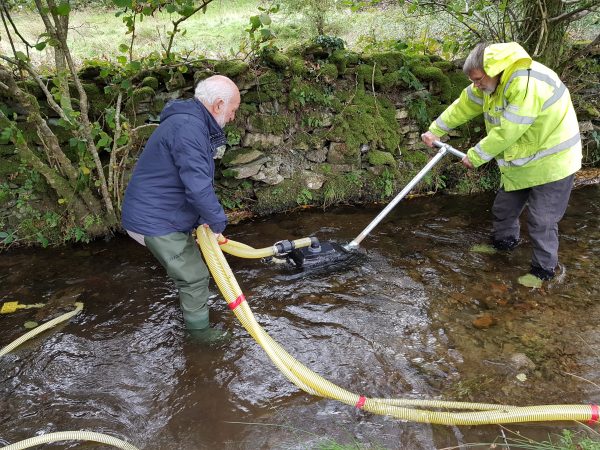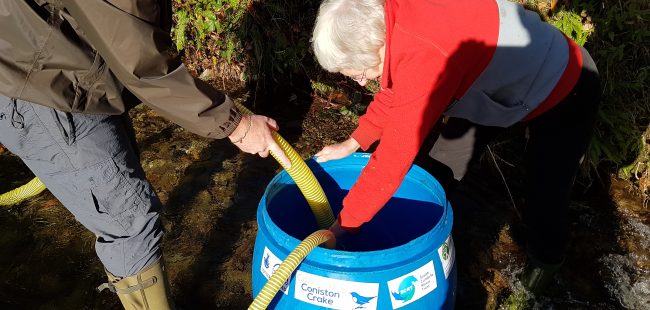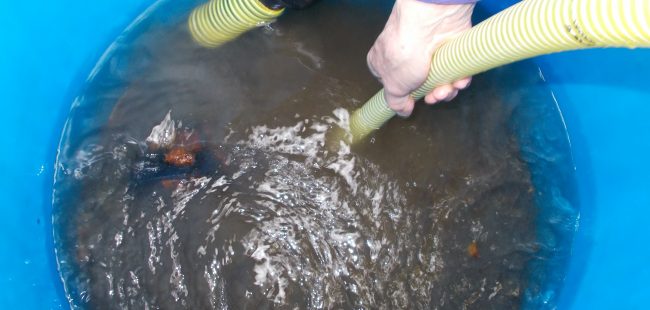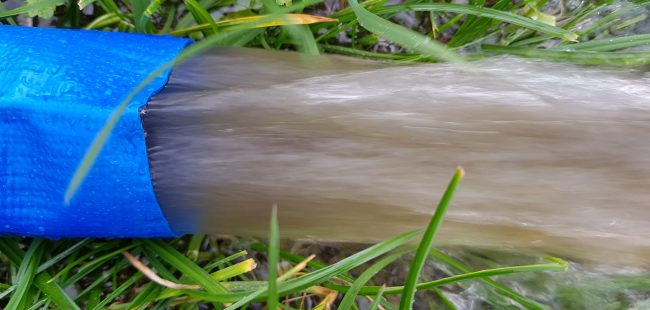Clean Gravels is one of several activities aimed at improving spawning habitat for salmon in some of the catchment’s becks and the River Crake.
Salmon lay their eggs in scrapes in the gravel, known as redds. The eggs, and young fry, need a good flow of oxygen through the gravels to grow. Sediment and silt can build up in the gravels through a lack of flow variation, as seen along sections of the River Crake as well as through excessive input from field run-off and bank erosion. The sedimentation means that oxygen flow through the gravels to eggs and fry is poor, resulting in high failure rates of salmon fry. Cleaning gravels aims to address the sedimentation issues, carried out in conjunction with other conservation measures in the project, such as the creation of buffer strips and tree planting.
Cleaning gravels is not new, for years areas of potential spawning habitats have been raked in order to break up the compacted layers of silt, moving sediment to further downstream. However, it was felt that to make even better improvements then as much silt and sediment as possible needed to be removed out of the watercourse through a pumping system.
Some considerable research was carried out, looking at other methods used across Europe and America, including an interesting looking sand wand. Project Officer Mike couldn’t resist a challenge and set about making one. The activity also received further funding from the Environment Agency through the Fisheries Improvement Programme (FIP) where partnership projects are delivered with fishing licence money, and from the Sir John Fisher Foundation.
Trials of the equipment were carried out and modifications made along the way until we had something we thought would work and could be used by small teams of volunteers across the catchment. We felt our version of the wand was quite difficult to manoeuvre so we changed the method to control the jetting and the sucking out better by using a barrel. This also contain the stirred up silt too, resulting in less travelling downstream.
Two training sessions were organised on two becks to put the tools and volunteers to the test.

Prototype 1, based on a sand wand

Prototype 2, using a barrel to contain the silt better

First proper test with the barrel

That’s a bit mucky!

Away it goes
